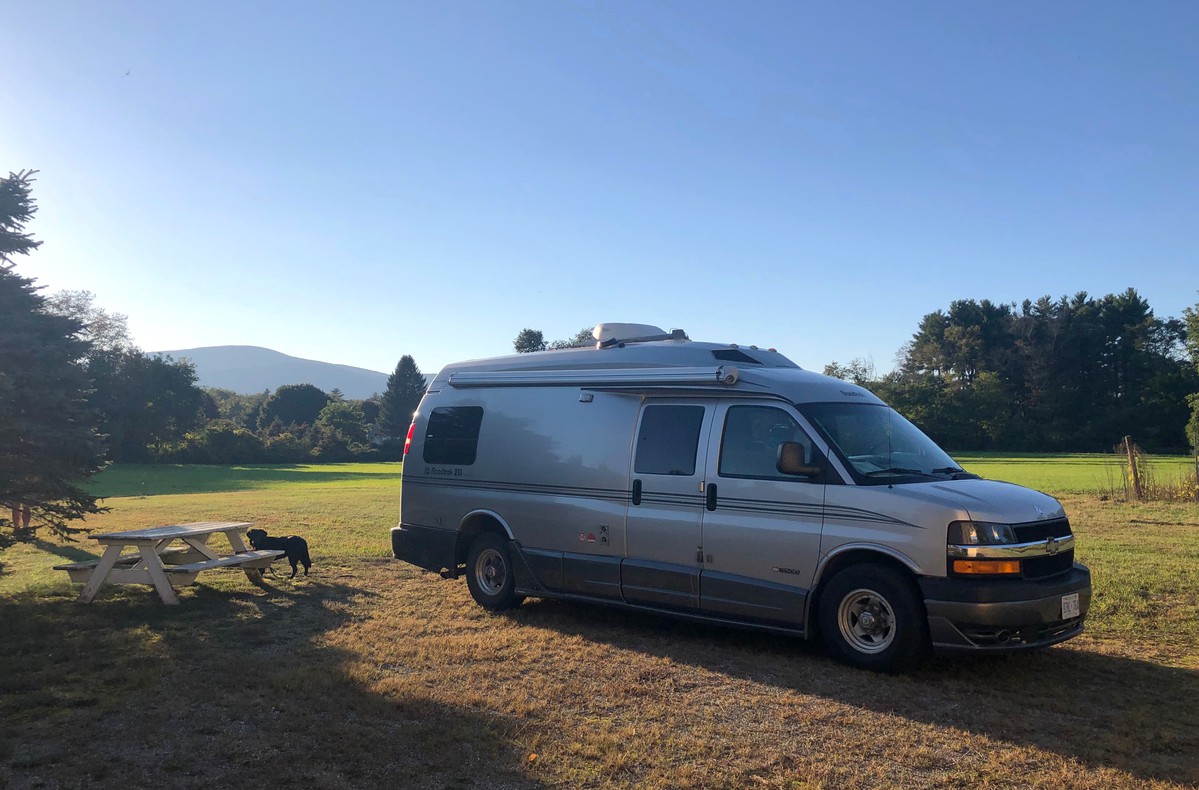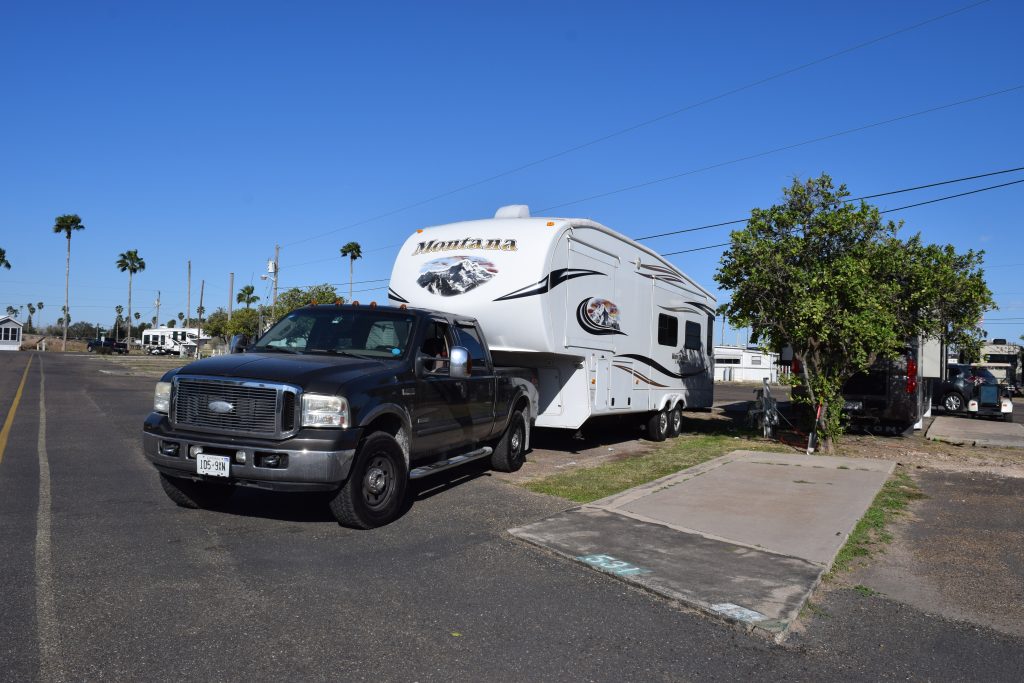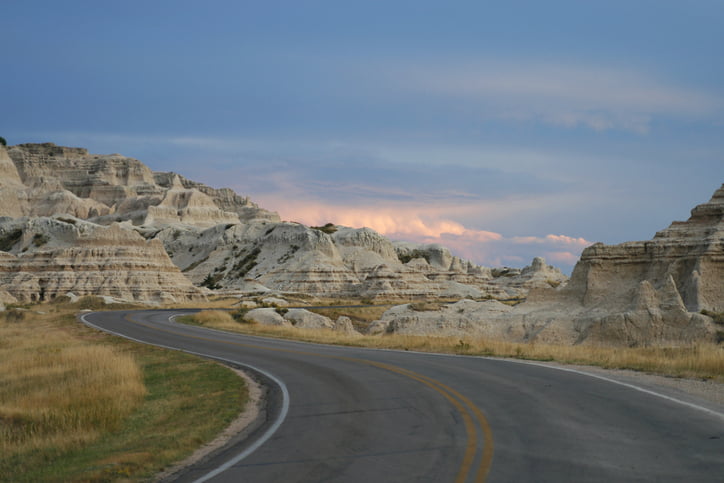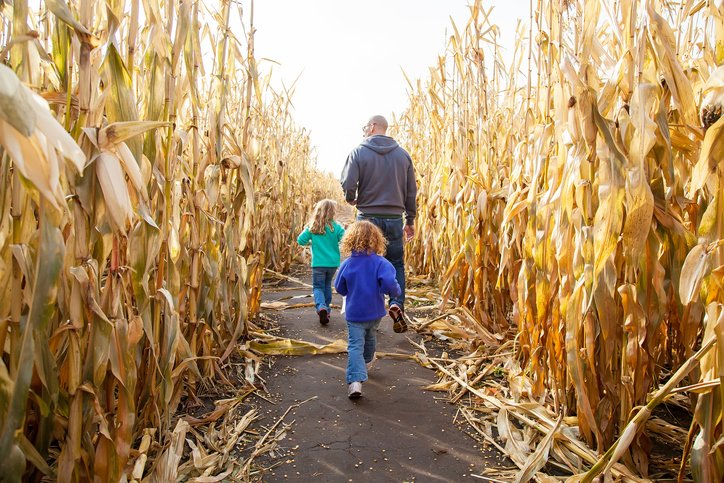In 1873, so the story goes, the Scottish naturalist and mountaineer John Muir wrote to his sister: “The mountains are calling, and I must go.” Muir, who played a key role in establishing the U.S. National Park Service, may have been talking about the mountains of the West in that letter. Still, his sentiment resonates with those who love the outdoors, whether the mountains are towering—like the Rockies—or undulating—like the mountain belts of the Appalachians in the east. Among these, the Catskills of New York State and the Berkshires of western Massachusetts are close together and make perfect RV travels.
The Catskill Mountains
The Catskills are easy to overlook, often overshadowed by the peaks of the higher-profile Adirondack Park to the north. The Catskill Mountain belt is tucked tight against the shoreline of the Hudson River, east of the Pennsylvania border, and west of where Massachusetts meets Connecticut. It’s a region of meandering roadways with long straights and gentle curves (as well as some like Route 23A, with curves of the hairpin variety!), picturesque farmland, waterways, lush forests, pretty villages, and the ever-present mountain backdrop.
A popular route for RVs (especially larger rigs) is the scenic 84-kilometre-long Catskill Mountain Scenic Byway along Route 28. This road travels through several “wilderness” areas splattered with intense orange, red, and yellow foliage in autumn. There are obvious reasons many of America’s early artists were drawn to paint these mountains, waterfalls, and forests. We travel in a smaller Class B Roadtrek camper van, so navigating those hairpins along the narrower Route-23A—a bit to the north—was doable. Every twist and turn is worth the trip.
Whatever route you choose, it’s a short hop to the village of Woodstock, the town that lent its name—but not its actual location—to the famed Woodstock Music and Arts Fair. In the scramble to organize the 1969 festival, it became impossible for the planners to secure a space in their first-choice location at Woodstock. It was moved about 100 km south to Max Yasgur’s farm, just outside Bethel, NY. Much more on that later.
These days, visitors will find a much-gentrified Woodstock (what happened to those anti-consumerism sentiments of the 1960s?). The town’s vendors are riffing on the karma of the Woodstock name, with bakeries advertising “Peace, Love & Cupcakes,” t-shirt shops abound, with tie-dye being the colour pattern of choice. It’s a beautiful, walkable main street filled with candle and home décor shops, meditation centres, and music stores. Music fans will love to know that a few kilometres north of town is the location of the famed “Big Pink,” the house where Bob Dylan’s Basement Tapes were recorded with his backup band. This mostly Canadian group later morphed into The Band. It’s also where The Band—including Robbie Robertson—wrote songs for their debut album, Music From Big Pink, including “The Weight.” While the house is not open for public tours, it is a short-term rental property. Fans may want to cruise by to see the pink-sided piece of rock and roll history.

But the real deal when it come to the history of the Woodstock festival happens an hour to the south at the Museum at Bethel Woods near the town of Bethel. A modest Woodstock Fair Monument looks out over the actual stage site and what was, at the time, the largest concert audience ever assembled in one place—more than 400,000 young people grooving to “Three Days of Peace and Music,” undeterred by the rain and the mud.

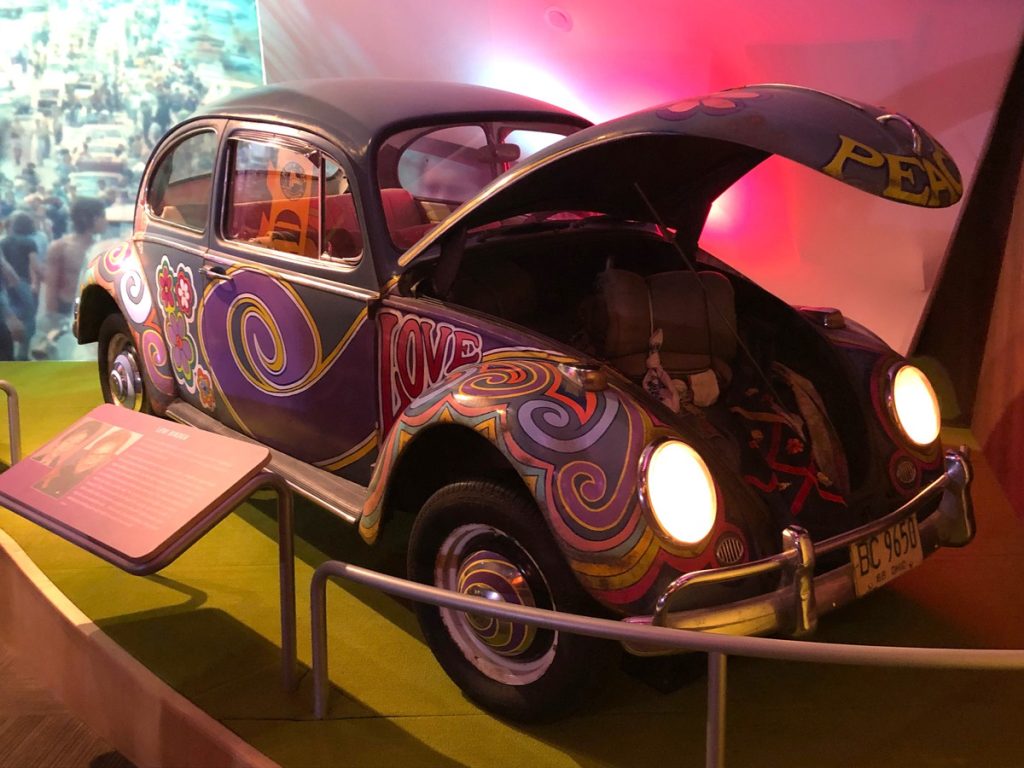
The excellent museum goes well beyond the actual music festival, with a long-range view of the decades leading up to the tumultuous era of the 1960s and how popular music grew to reflect the growing frustration felt by many young Americans. It’s a telling of politics and culture at a time when Americans were deeply divided, and how it all led to one of the most celebrated music festivals in history. Now recognized on the National Register of Historic Places, Woodstock represented a brief moment in history that defined a generation. Interactive photo and video-heavy galleries look at the challenges of racial inequality, the deeply unpopular Vietnam War, a growing feminist movement, and the civil rights fights of the 1960s. There are displays of the hippie’s counterculture, bohemian lifestyle, including Go-Go boots, fringed jackets, and bell-bottom jeans. On the music front, songs of protest by artists like Pete Seeger, John Lennon, Joan Baez, and Arlo Guthrie were embraced alongside rock and pop that exploded in new directions as musicians experimented with new sounds and sensibilities. A wildly-painted bus and VW Beetle are parked in the galleries. Over time, Woodstock came to symbolize an entire generation, an event stamped with the power of peace, love, and idealistic optimism. Camping is now available at Bethel Woods.
The Berkshires
The “peace-love” vibe that defined Woodstock has seeped into the Berkshires, the mountain belt running through western Connecticut and Massachusetts. Who doesn’t hum along to James Taylor’s hit “Sweet Baby James” when he sings, Though the Berkshires seemed dreamlike on account of that frostin’.
Inspired by the music that surrounded us, we overnighted at The Magic Fluke in Sheffield, Massachusetts, a member of Harvest Hosts and a family-run business making handcrafted ukeleles and a variety of other stringed instruments. A short drive to the north along scenic Highway 7 took us through the town of Great Barrington, and a wrong—but fortuitous—turn along a rural sideroad going right by The Guthrie Center. This little piece of history is connected to that famous musical family—Woody and Arlo—and the circa-1820s white sided church is now a community center dedicated to food insecurity programs, a free legal clinic, fundraising, a summer concert series, and a monthly inter-faith service where—in Arlo’s words—you “bring your own God.”

There’s a bit of history to The Guthrie Center that cannot be ignored. This little church is the “scene of the crime” in the Arlo Guthrie song “Alice’s Restaurant.” Parts of the movie were filmed at the church. The center is now focused on the needs of the community— “kindness for kindness sake”—but there are a few displays of photos as well as Arlo’s handwritten poems and lyrics on the wall. Family members staff the center and there’s a real sense of the value of community. One of the best accidental detours we’ve ever taken.
Not far to the north is the pretty town of Lenox, best-known as the site of Tanglewood, the music and concert venue that is the summer home of the Boston Symphony Orchestra, the Boston Pops, and where James Taylor (a resident of the area) plays his annual July 4th concert series. Getting tickets to a summer concert at Tanglewood is a refined picnic affair, where people arrive early and set out lavish spreads to share with friends. The roadways nearby and parking lots are RV-friendly spaces.
When it comes time to leave the pretty Berkshires, you could not find a better spot to say goodbye than with a drive up to Mount Greylock in the far northwest corner. The narrow, paved, 30-km Scenic Byway to the summit does have many hairpin turns and is limited to vehicles seven metres (22 feet) and under. But the view from the top of Massachusetts’s highest point (1,064 m/3490 ft) is spectacular, overlooking valleys and the swell of the mountain range below, with views on a clear day as far as 145 km away.

The route from the base to the peak represents a stepping of ecological zones created by elevation and climate, so that travelling to the top is like going from the hardwood forests of Pennsylvania to the boreal fir and spruce forests of northern Maine. At the summit there are short hiking trails and a tall war memorial.
There’s another unique aspect to this scenic spot. It’s not so much a place to say “goodbye,” but rather a place to say, “see you soon, we’ll be back again.” And, as a traveler, who could ask for more?
www.visitcatskills.com
www.bethelwoodscenter.org
www.berkshires.org
www.guthriecenter.org

